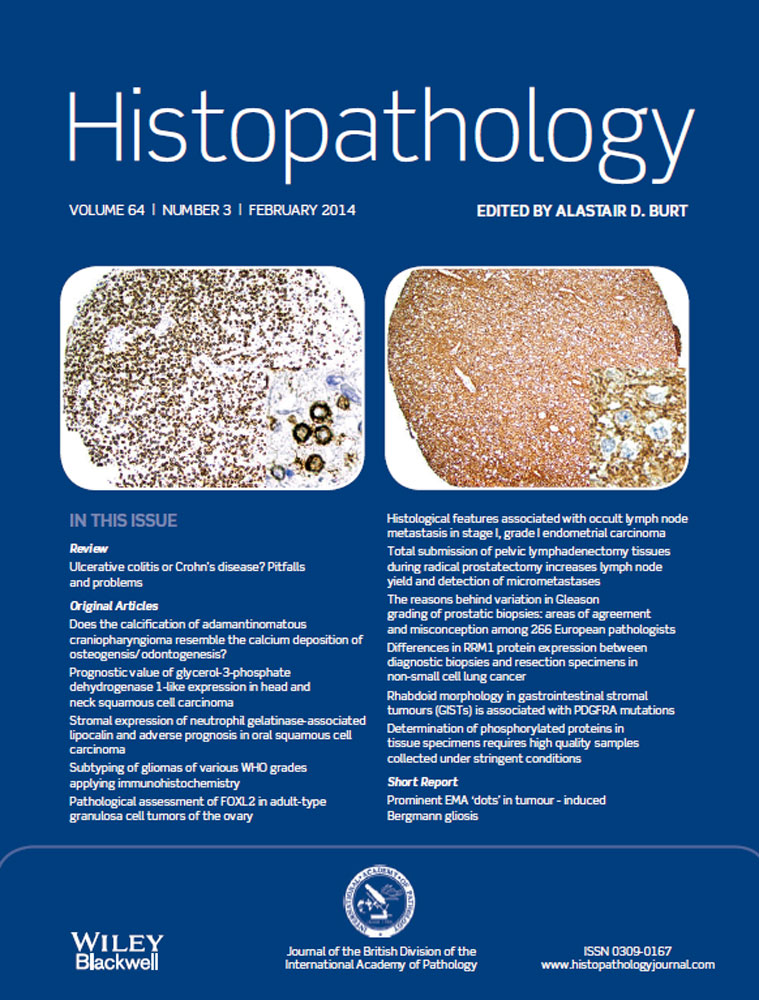Total submission of pelvic lymphadenectomy tissues removed during radical prostatectomy for prostate cancer increases lymph node yield and detection of micrometastases
Abstract
Aims
The detection of lymph node metastases has prognostic and therapeutic implications for patients undergoing radical prostatectomy for prostate cancer. Macroscopic identification of pelvic lymph nodes in surgical lymphadenectomy specimens can be difficult, with a potential for incomplete submission of lymph nodes for microscopic examination. This study was undertaken to determine whether complete sampling of lymphadenectomy specimens would improve the detection of metastatic disease in patients undergoing radical prostatectomy.
Methods and results
We examined 109 pelvic lymphadenectomies accompanying radical prostatectomy specimens to assess the benefit of complete submission of the lymph node packets to detect extra lymph nodes and metastatic disease. We found that blocking the residual tissue, after all palpable lymph nodes had been identified, increased the mean number of lymph nodes from 3.8 to 10.8, with an average of 0.84 macroscopically undetectable nodes being recovered per block submitted. Metastatic prostate cancer was identified in eight cases, one of which had cancer in an impalpable lymph node only.
Conclusions
Submission of all pelvic lymphadenectomy tissue for histological examination improves the yield of lymph nodes and the detection of metastatic prostate cancer.




